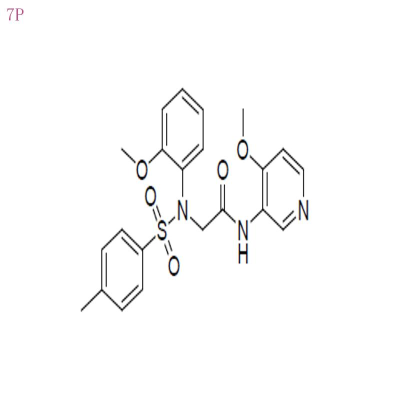-
Categories
-
Pharmaceutical Intermediates
-
Active Pharmaceutical Ingredients
-
Food Additives
- Industrial Coatings
- Agrochemicals
- Dyes and Pigments
- Surfactant
- Flavors and Fragrances
- Chemical Reagents
- Catalyst and Auxiliary
- Natural Products
- Inorganic Chemistry
-
Organic Chemistry
-
Biochemical Engineering
- Analytical Chemistry
- Cosmetic Ingredient
-
Pharmaceutical Intermediates
Promotion
ECHEMI Mall
Wholesale
Weekly Price
Exhibition
News
-
Trade Service
| Leaf phosphorus distribution is crucial for mangrove plants to cope with chilling damage |
Recently, research results led by Professor Cao Kunfang of the College of Forestry of Guangxi University and the participation of the University of Western Australia, Lanzhou University and other units were published in the international journal " New Phytologist ", revealing for the first time that leaf phosphorus distribution and low temperature tolerance of mangrove plants The close relationship between acceptability
.
.
New Phytologist
Mangroves grow in the intertidal zone of tropical and subtropical seashores, adapt to the hypoxic and high-salt environment in the periodic sea tides, provide habitats for a large number of organisms, have high growth capacity, and are important blue carbon sinks.
, The ecological barrier of the coastal zone
.
Hundreds of millions of people around the world depend on mangroves for their survival, so UNESCO has designated July 26 each year as the "International Day for the Protection of Mangrove Ecosystems
With the global warming, mangroves began to migrate to higher latitudes
.
In this process, the frequent cold waves (low temperature stress) in higher latitude regions have become an important factor affecting the distribution of mangroves
The study collected propagules of different mangrove species at different latitudes from Guangxi, Hainan, Japan, Okinawa and Iriomote Island, and cultivated them into seedlings in the nursery of Guangxi University.
A total of six candels, Avicennia marina, and olive trees were measured in an artificial climate room.
The population's phosphorus allocation strategy, photosynthetic physiology and transcriptome regulation in response to low temperature stress
.
Phosphorus, as an essential nutrient element for plant growth, participates in almost all physiological processes, especially in photosynthesis, enzyme synthesis and metabolism
.
This research innovatively started from the distribution of phosphorus by plants, and explored the interaction of important phosphorus components (such as nucleic acid phosphorus, metabolic phosphorus, lipid phosphorus) metabolism and photosynthetic physiology under low temperature stress
Studies have found that the plant photosystem 2 and photosystem 1 are severely damaged at the same time under low temperature, especially the severe damage of the photosystem 1 is fatal, and it is possible that not only the living tissues of other organs of the leaves have also suffered severe damage
.
The maintenance of nucleic acid phosphorus and metabolic phosphorus concentrations, in conjunction with a higher leaf dark respiration rate and lower light damage, is the key to the complete survival of the candel with higher low temperature tolerance
At the same time, populations that failed to effectively regulate phosphorus distribution under low temperature experienced more severe light damage and plant death
.
In the recovery process, mangrove plants increase the content of nucleic acid phosphorus to promote protein synthesis and physiological repair
This study reveals that the distribution and regulation of leaf phosphorus components are closely related to the cold tolerance of warm-loving plants, and provides new clues for studying the mechanisms of tropical and subtropical plants adapting to cold.
It is useful for cold-resistant breeding in agriculture and forestry and predicting the distribution of natural populations under climate change.
It has important reference value
.
This research was funded by the National Natural Science Foundation of China and the Guangxi Bagui Scholars Project
.
(Source: China Science News Li Chen)
Related paper information: https://doi.
https://doi.
org/10.
1111/nph.
17770







